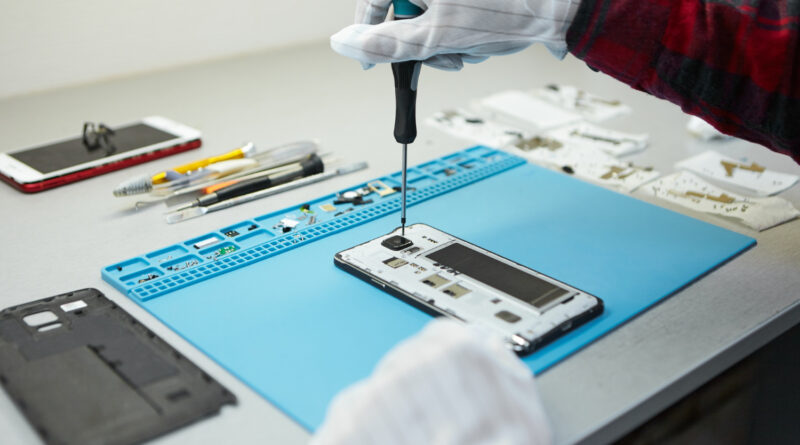The Impact of software updates on iPhone Repair
Introduction
Apple regularly releases software updates for its iPhone devices to improve performance, fix bugs, and enhance security. These updates are an essential aspect of device maintenance and can positively impact iPhone repair. However, they can also have negative effects on device performance and require repair. This article will explore the impact of software updates on iPhone repair, including their benefits and drawbacks, Apple’s approach to software updates, and tips for managing updates and repairs.
The Positive Impact of iPhone Software Updates on the Repair
One significant benefit of iPhone software updates is improved device performance. Updates can optimize device processes, improve app speed, and enhance device memory. These improvements can reduce the likelihood of hardware failure and the need for repairs. Additionally, software updates include bug fixes and security patches that address known issues and vulnerabilities. These updates prevent software issues from becoming hardware problems that require repair.
Another advantage of iPhone software updates is enhanced battery life. Apple has included battery optimization in recent updates to reduce battery drain and extend device life. These updates help ensure that the battery lasts longer and reduces the need for repairs related to battery failure.
Furthermore, software updates can improve device compatibility with third-party accessories. Updates can address compatibility issues between devices and accessories, such as charging cables and headphones. These updates can prevent accessory-related damage to the device and reduce the likelihood of repair needs.
The Negative Impact of iPhone Software Updates on the Repair
Despite the benefits of software updates, they can have negative effects on device performance and require repair. One drawback of software updates is incompatibility with older device models. As Apple releases new updates, some older devices may no longer support them, rendering them obsolete. This means that users with older devices may need to upgrade to newer devices to continue receiving software updates and ensure device functionality.
Additionally, software updates can introduce software-related issues that may require repair. Although updates aim to fix bugs, they can sometimes create new ones or cause existing ones to worsen. These issues can lead to device malfunctions and decrease device performance, requiring repair.
Another negative effect of software updates is decreased device performance and battery life. While updates can improve battery life, they can also negatively impact it by increasing battery drain or decreasing charging speed. Additionally, updates can slow down device performance by introducing new features or processes that require more resources. These effects can contribute to device failure and require repair.
Apple’s Approach to iPhone Software Updates and Repair
Apple’s approach to software updates and repair has been a topic of controversy among consumers and industry experts. Some argue that Apple uses software updates to force device obsolescence and encourage users to upgrade to newer models. However, Apple claims that updates aim to improve device performance, fix bugs, and enhance security.
Apple’s stance on device repair is that users should only seek authorized repair services to ensure device safety and functionality. Apple offers repair services through its retail stores and authorized service providers. Additionally, Apple offers warranties that cover repair costs for device issues caused by manufacturer defects.
Apple’s approach to software updates impacts device lifespan by providing regular updates that optimize device processes and extend device life. However, the company’s policies on authorized repair services and warranties can limit user freedom to seek alternative repair options.
Tips for Managing iPhone Software Updates and Repairs
To manage iPhone software updates and repair effectively, users should follow best practices for updating software. These practices include backing up device data, ensuring sufficient device storage, and verifying Wi-Fi connectivity before updating.
Users should also know how to troubleshoot software-related issues to prevent unnecessary repairs. Troubleshooting includes identifying the root cause of device issues and attempting to resolve them using software solutions.
When seeking professional repair services, users should ensure that the service provider is authorized by Apple and offers genuine parts. Using unauthorized repair services or non-genuine parts can cause further damage to the device and void its warranty.
DIY repair
For users who want to attempt a DIY repair, they should be aware of the risks involved. DIY repair can cause further damage to the device if not done correctly and void the device warranty. However, some DIY repair options are safe and effective, such as replacing the device screen or battery.
Users should research and follow guides from reputable sources before attempting any DIY repair. Additionally, users should consider the cost-benefit of DIY repair versus professional repair and weigh the risks involved.
Conclusion
In conclusion, iPhone software updates can significantly impact device repair, both positively and negatively. Updates can improve device performance, fix bugs, enhance security, and extend battery life. However, updates can also cause software-related issues, decrease device performance and battery life, and limit device compatibility.
Apple’s approach to software updates and repair impacts device lifespan and user freedom to seek alternative repair options. However, users can manage updates and repairs effectively by following best practices for updating software, troubleshooting issues, seeking authorized repair services, and considering DIY repair options.
In the end, responsible iPhone ownership and repair practices can reduce the need for repair and extend the device’s lifespan, providing more value to the user.




